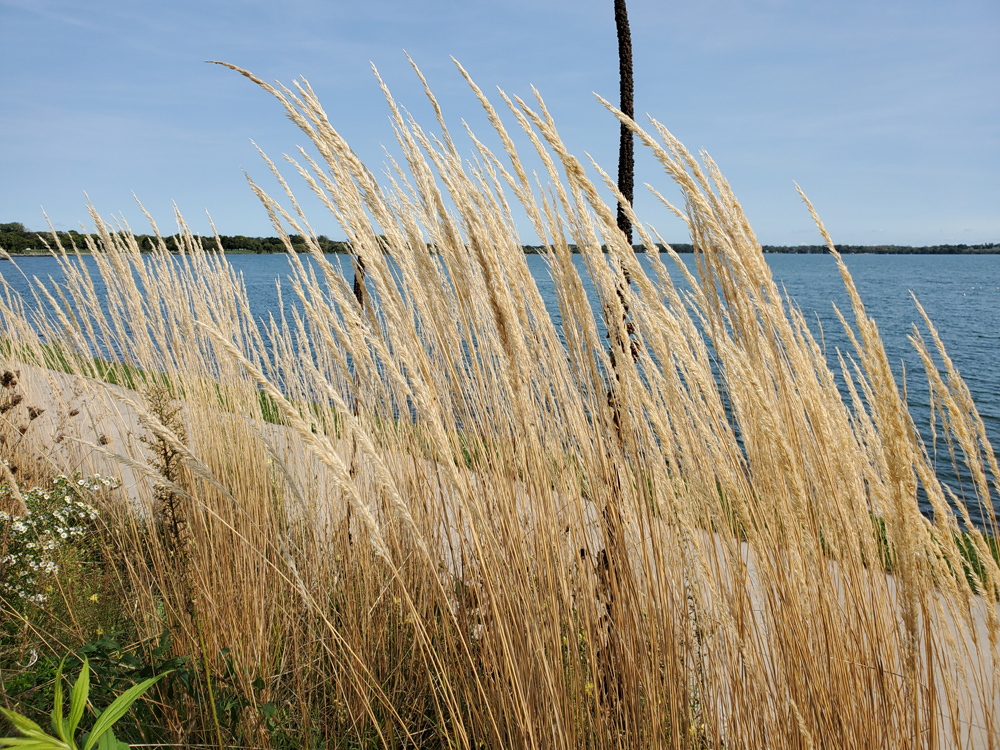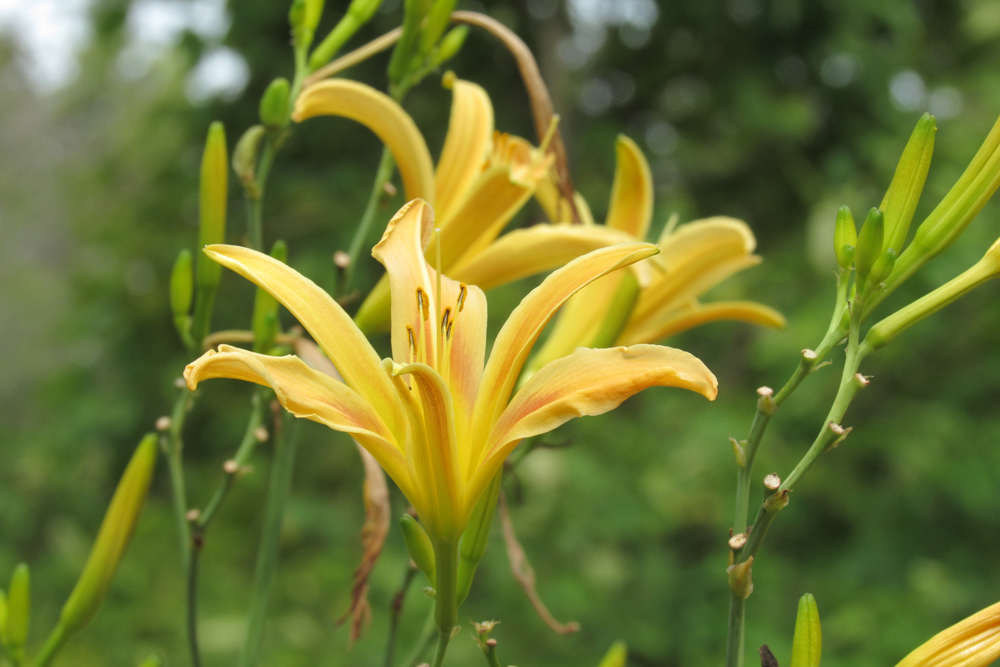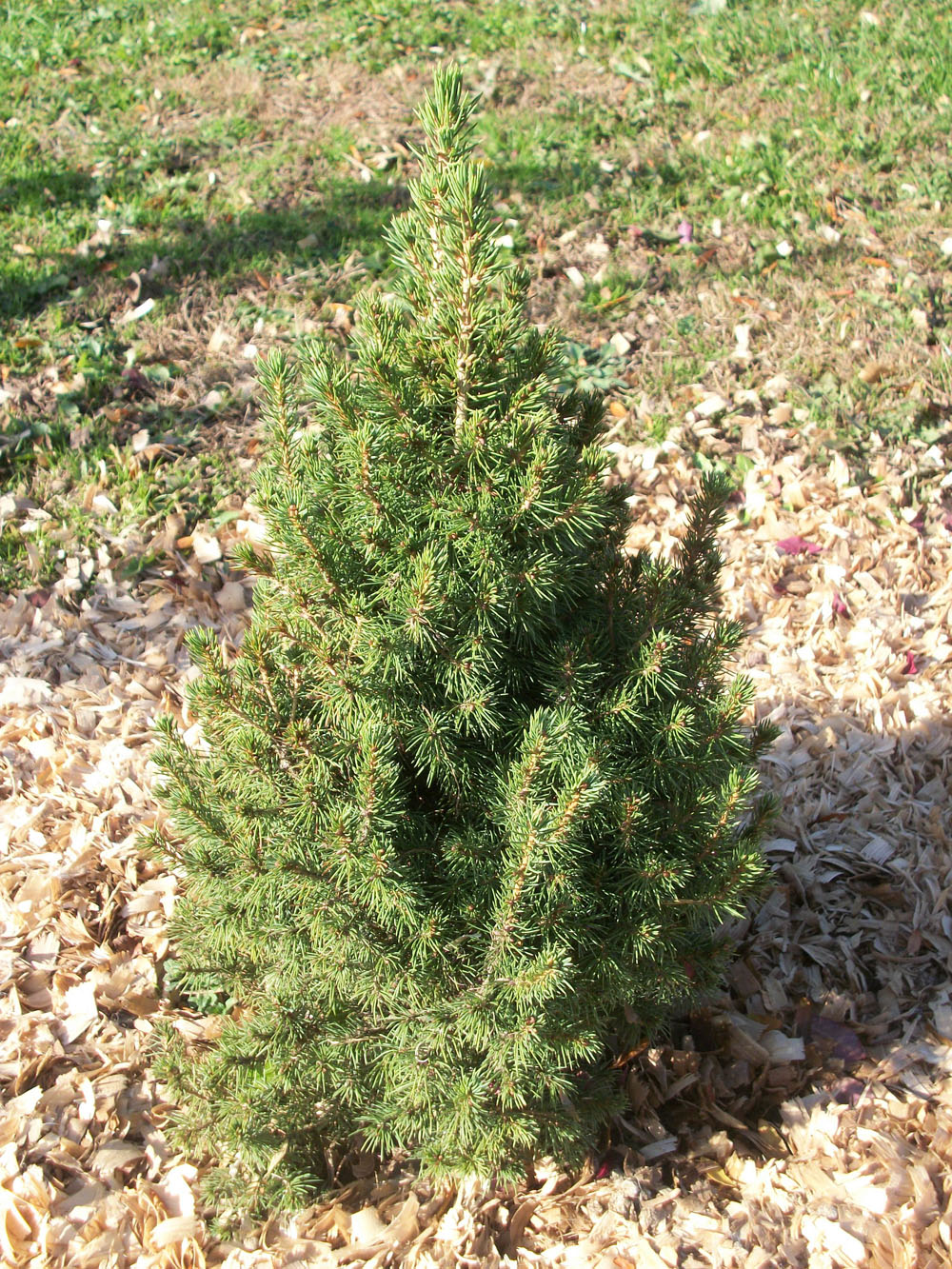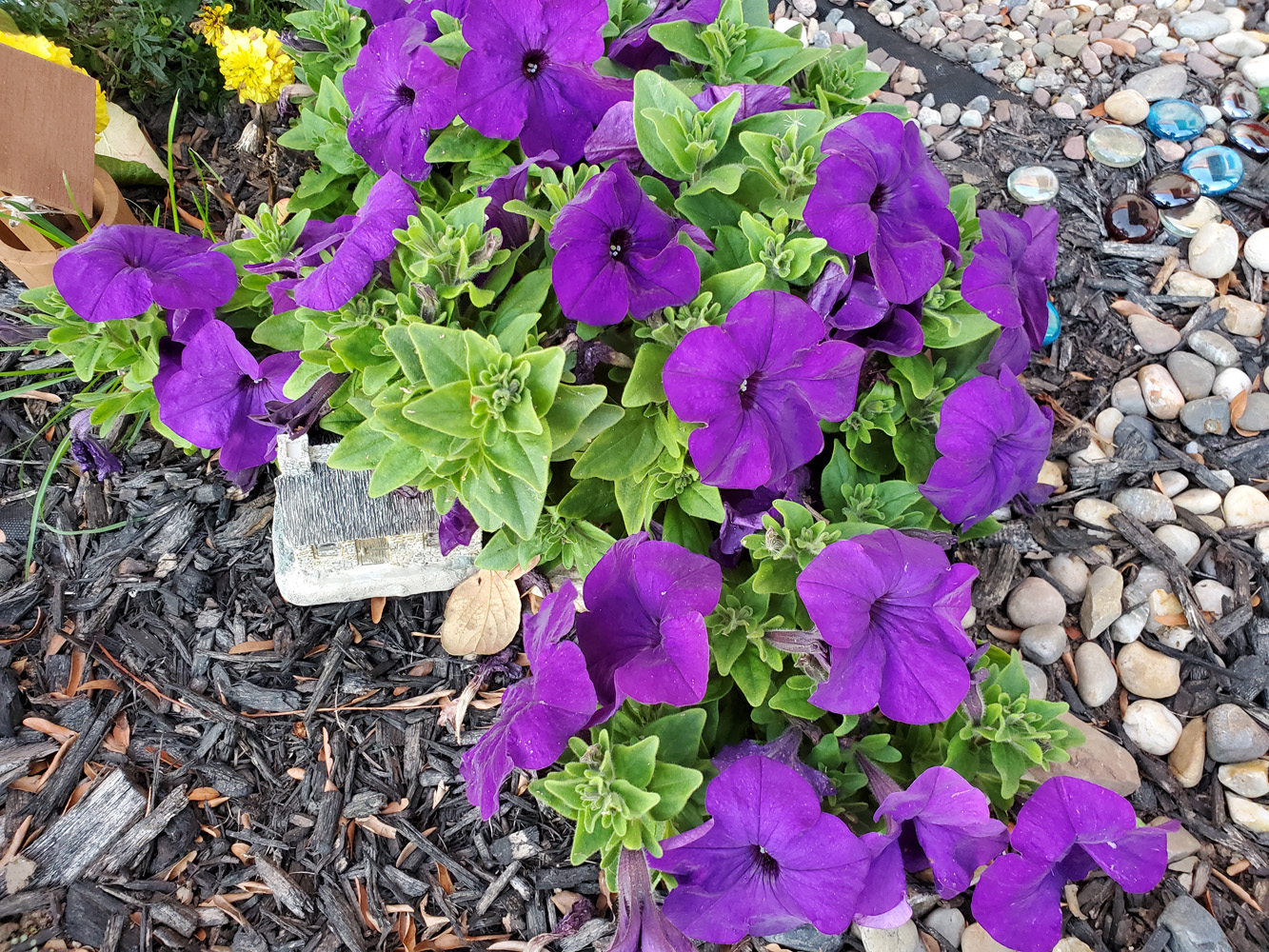Cattails
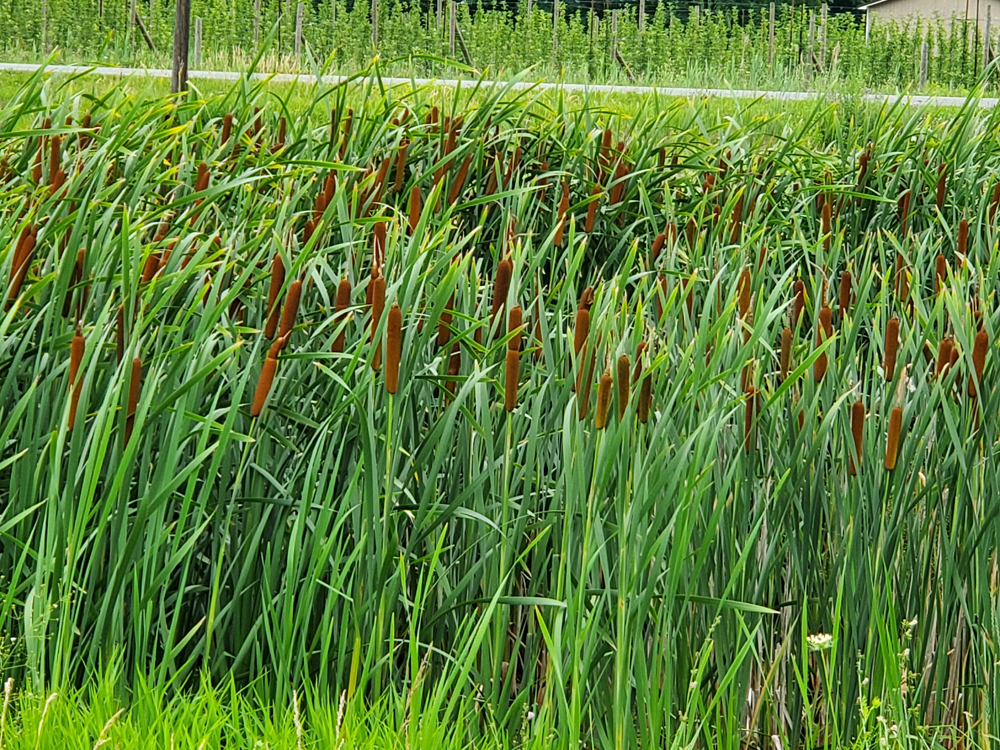
In the realm of native vs. exotic plants, cattails have an interesting story. Cattails are native to our area, but there is a species here which is non-native or exotic. Cattails have some benefits and visual interest in the landscape, but can be a problem due to their aggressive growing habits.
According to Western New York PRISM (Partnership for Regional Invasive Species Management), cattails are perennial wetland plants. They produce dense, rhizome mats that can extend 30 inches into the soil. The native variety is broadleaf cattail, T. latifolia. The exotic variety is narrowleaf cattail, T. angustifolia. Narrowleaf cattail leaves are 3/4 inch to 1/2 inch wide and broadleaf cattail leaves can be up to 1-1/2 inches in width. The flowering head of broadleaf cattails is larger and stouter than the narrowleaf cattail flowering head. The narrowleaf cattail flower head also has a gap between the female and male parts of the flower. Western New York PRISM says the two species can hybridize and produce offspring that are often taller and more aggressive than either parent.
The Ladybird Johnson Wildlife Center explains that the flowering spike of cattails has a tallish, club-like spike of tiny, male flowers that extends directly above the brownish cylinder of female flowers. It is that gap or lack of a gap between the two that can be most helpful in determining if the cattail species is native or exotic.
On the positive side, native cattail does provide favorable habitat for birds including red-winged blackbirds and marsh birds such as ducks and geese as well as muskrats. The rootstock is edible, being mostly starch. Native Americans ground it into a meal and early colonists also used it for food. Young shoots can be eaten like asparagus and the immature flower spikes can even be boiled and eaten like corn on the cob. Sprouts at the tip of the rootstock can be eaten in salads or boiled and served as greens.
Additionally, Native Americans used cattail leaves for thatched roofs, woven floor mats and sandals. The feathery seeds were used for baby beds. The Ladybird Johnson Wildlife Center says when mixed with ash and lime, the seeds form a cement that is reportedly harder than marble. The water repellent and buoyant seeds have also been used as padding for bedding, pillows and diapers.
Cattails are a striking plant and the flower heads can be used in both fresh and dried arrangements. Home gardeners can grow them in water gardens, ponds or bogs and they can also be used as thick privacy screens. Because cattails can be aggressive, consider planting them in containers, one per 12 to 19-inch pot. Cattails will naturally increase in number through seed dispersal and rhizome reproduction. Each fragmented piece of rhizome has nodes which can send up new shoots.
On the negative side, because cattails are aggressive and can rapidly dominate an area, they can become a problem in wetlands because they impede water flow. The dense rhizome mats they form and the thick layer of leaf litter produced can also exclude the growth of other plants and create a threat to biodiversity. Western New York PRISM says herbicide application can help control cattails that have spread, especially if treated during dry periods in the summer. Water-level manipulation has been used in combination with other methods to achieve control. PRISM says mowing and then flooding the cut stems can be effective, but cutting too early in the season prior to flowering can encourage re-sprouting.



